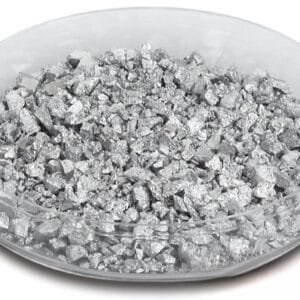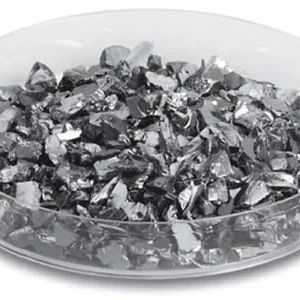Copper indium selenide (CIS) evaporation materials from TFM are made from a high-purity blend of copper, indium, and selenium. These materials are vital in the deposition processes where high-quality thin films are essential. TFM ensures that its CIS evaporation materials meet stringent purity standards, offering up to 99.9995% purity to guarantee consistent performance in deposition applications.
Related Products:
- Copper Evaporation Materials
- Indium Evaporation Materials
- Selenide Ceramic Evaporation Materials
Specifications for Copper Indium Selenide (CIS) Evaporation Materials
| Material | Copper Indium Selenide |
|---|---|
| Chemical Formula | CuInSe₂ |
| Physical State | Solid |
| Melting Point | 1327°C (2421°F) |
| Density | 5.77 g/cc |
| Purity Range | 99.9% – 99.999% |
| Available Forms | Powder, Granules, Custom Shapes |
Applications of Copper Indium Selenide (CIS) Evaporation Materials
CIS evaporation materials are integral in various deposition techniques such as chemical vapor deposition (CVD) and physical vapor deposition (PVD). They are particularly useful for creating coatings in optics, including wear-resistant layers, decorative coatings, and display technologies. Their high-quality film deposition is critical for achieving the necessary optical properties and durability in these applications.
Packaging and Handling of Copper Indium Selenide (CIS) Evaporation Materials
TFM ensures that all copper indium selenide (CIS) evaporation materials are packaged with clear labeling for easy identification and to maintain the highest standards of quality control. The packaging is designed to prevent damage during transportation and storage, safeguarding the material’s integrity from the point of manufacture to delivery.
Contact Information for Orders and Customization
TFM is a top-tier supplier of high-purity CIS evaporation materials in various forms, including granules, powder, rods, and custom shapes. In addition, TFM provides an array of evaporation tools such as boats, filaments, heaters, crucibles, and e-beam crucible liners. If you require specific forms, quantities, or further information on pricing, feel free to send an inquiry.


 MSDS File
MSDS File



Reviews
There are no reviews yet.